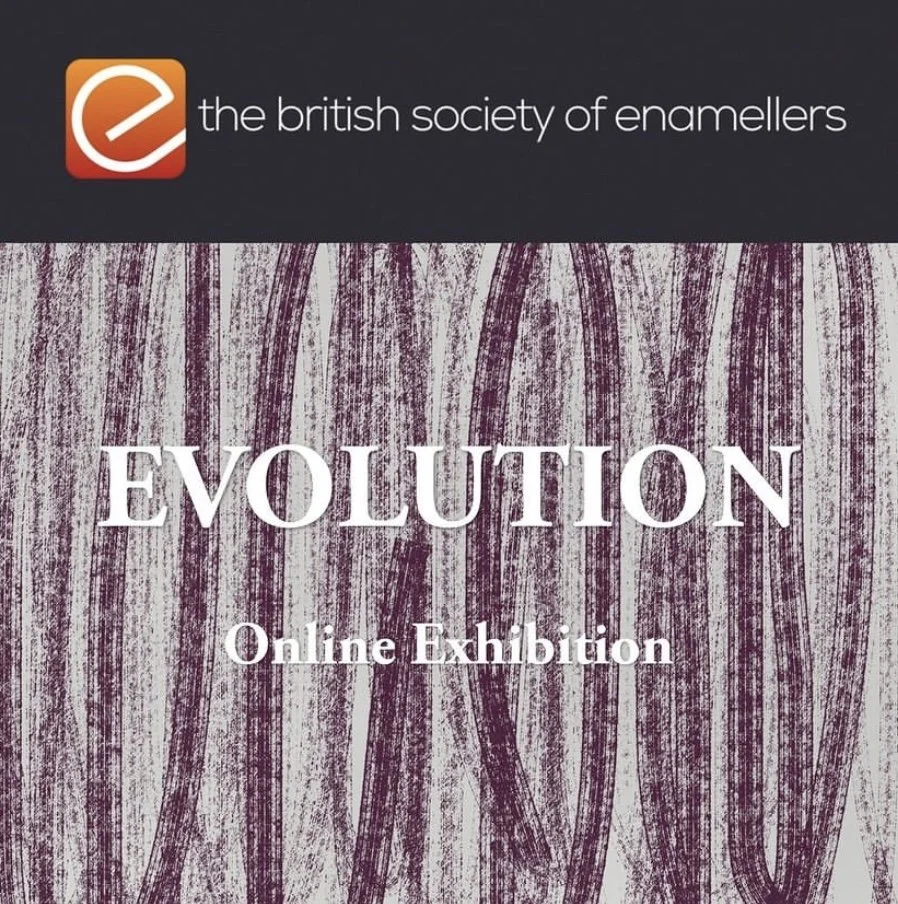Evolution
A/W 2022
An exhibition of work from our members reflecting on the theme of ‘evolution’.
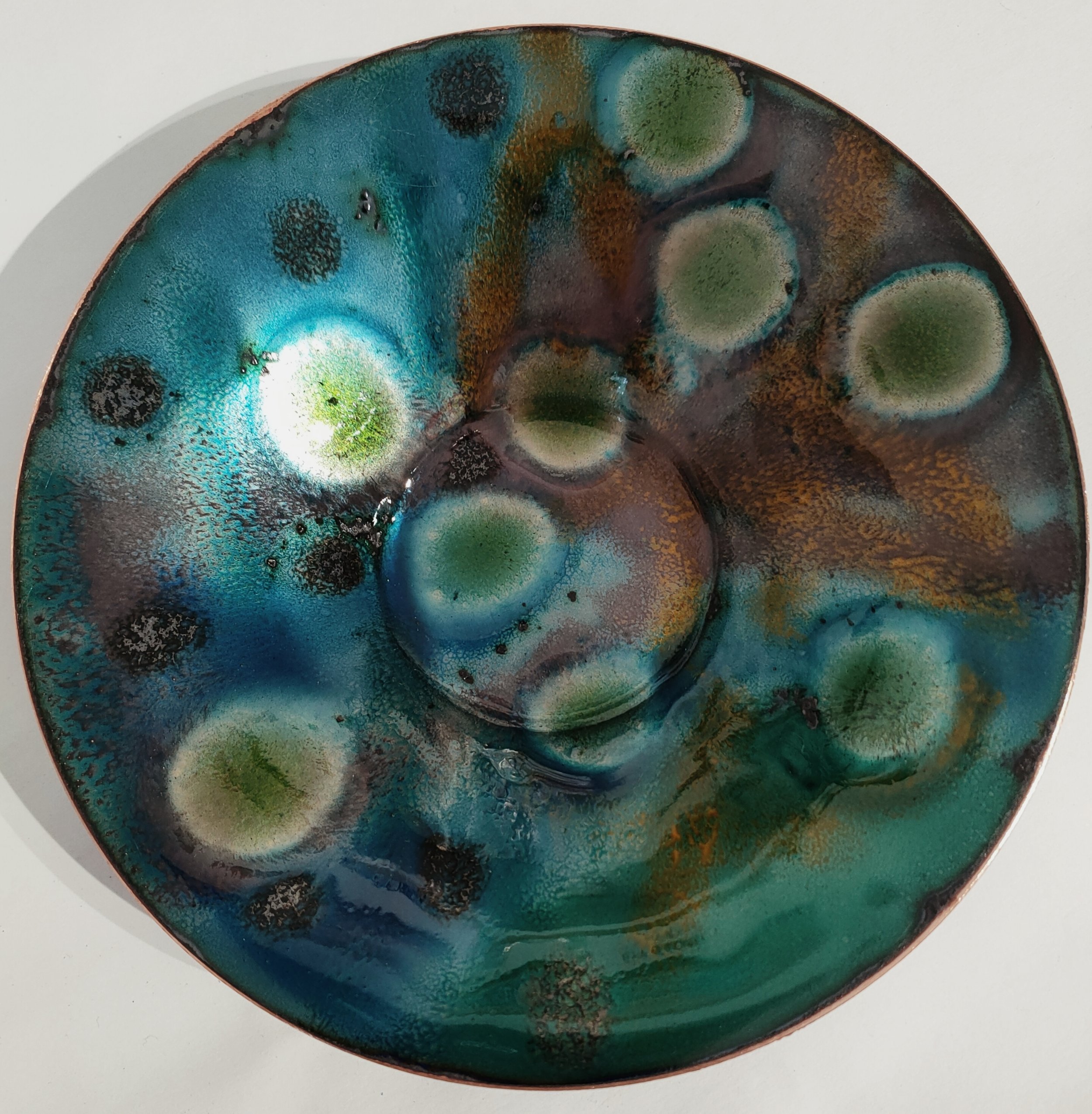
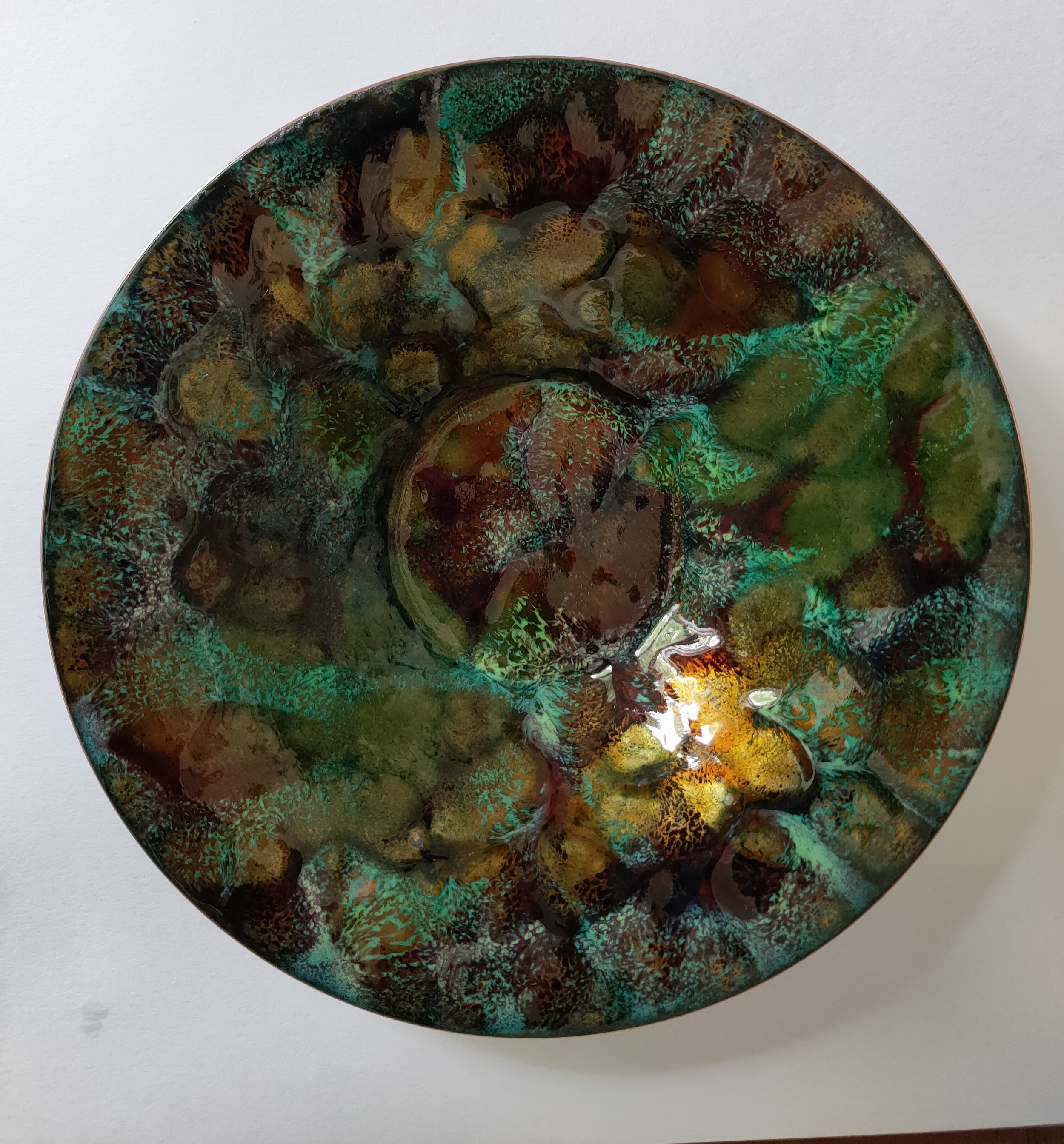
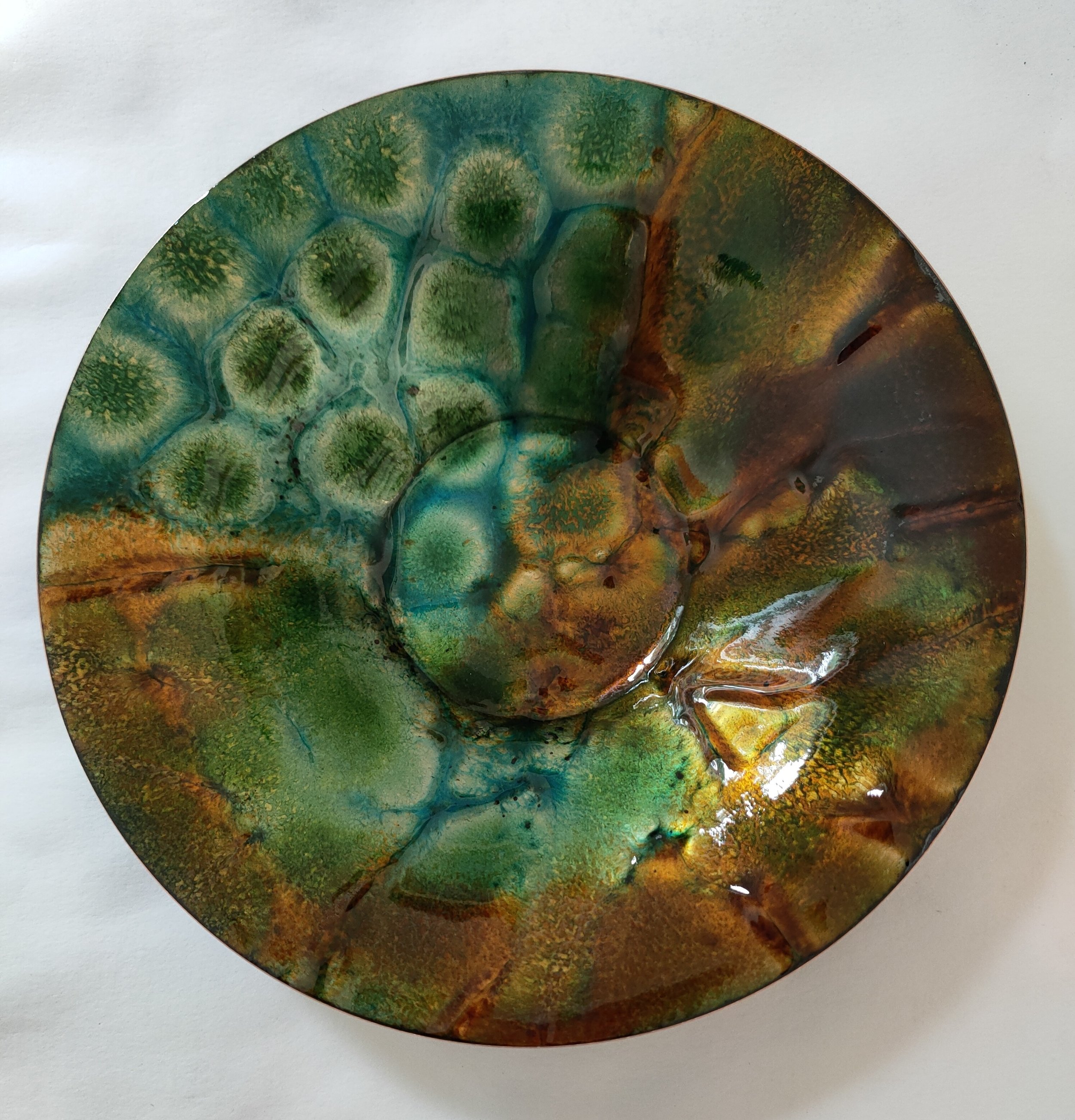
Amanda Thompson
I come from a Fine Art/Painting background but have been fascinated by enamelling since i was a very young child watching my grandmother and aunt create enamel panels and bowls. I went to West Dean to learn the technique of sifting enamel from Pat Johnson, which i still employ today. Working in a precise and carefully measured way i investigate ideas around the concept of loss and change in 'Nature,Conservation and Environment'. Using my garden,local nature reserve and the local coastline i have documented grass stems, flowers and tidal pools, through the lens of fine art, and created a series of bowls which echo the natural forms found here on the South Kent coastline. I hope, through my work, to draw peoples attention to the marginal, the small, the easily overlooked, in an attempt to re-connect people with nature and the landscape around them. I exhibit and now sell my work through galleries and instagram.
These 3 'Seaweed Bowls' were the result of continued and sustained interest in a particular rock pool at The Warren in Folkestone. I visited it daily, taking photographs, observing the flora and fauna . I wanted to recreate the feeling that the pool gave me and to mimic its intensity of depth and colour in enamel. I was drawn to the seaweed and its gentle movement in the intertidal wash and this led me to research the evolution of seaweed. There are over 9000 species in the UK alone and they are a window into the past. They are at least a billion years old and have evolved from photosynthesising blue-green forms with algae to create the many different forms we can see today.Through sifting enamel directly through seaweed onto the bowls i am making a permanent record of its evolutionary journey to date, making the impermanent permanent and marking time past and time present.
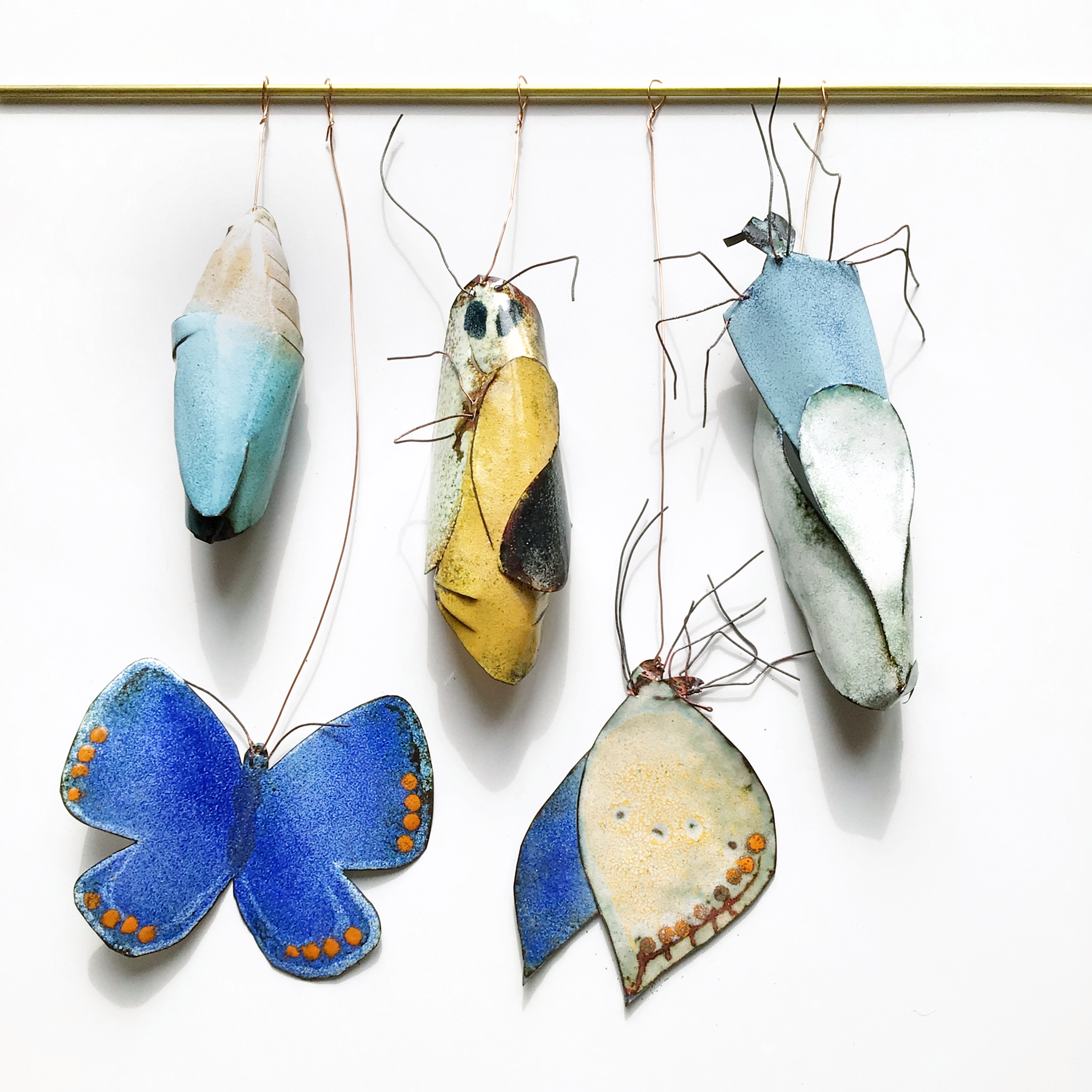
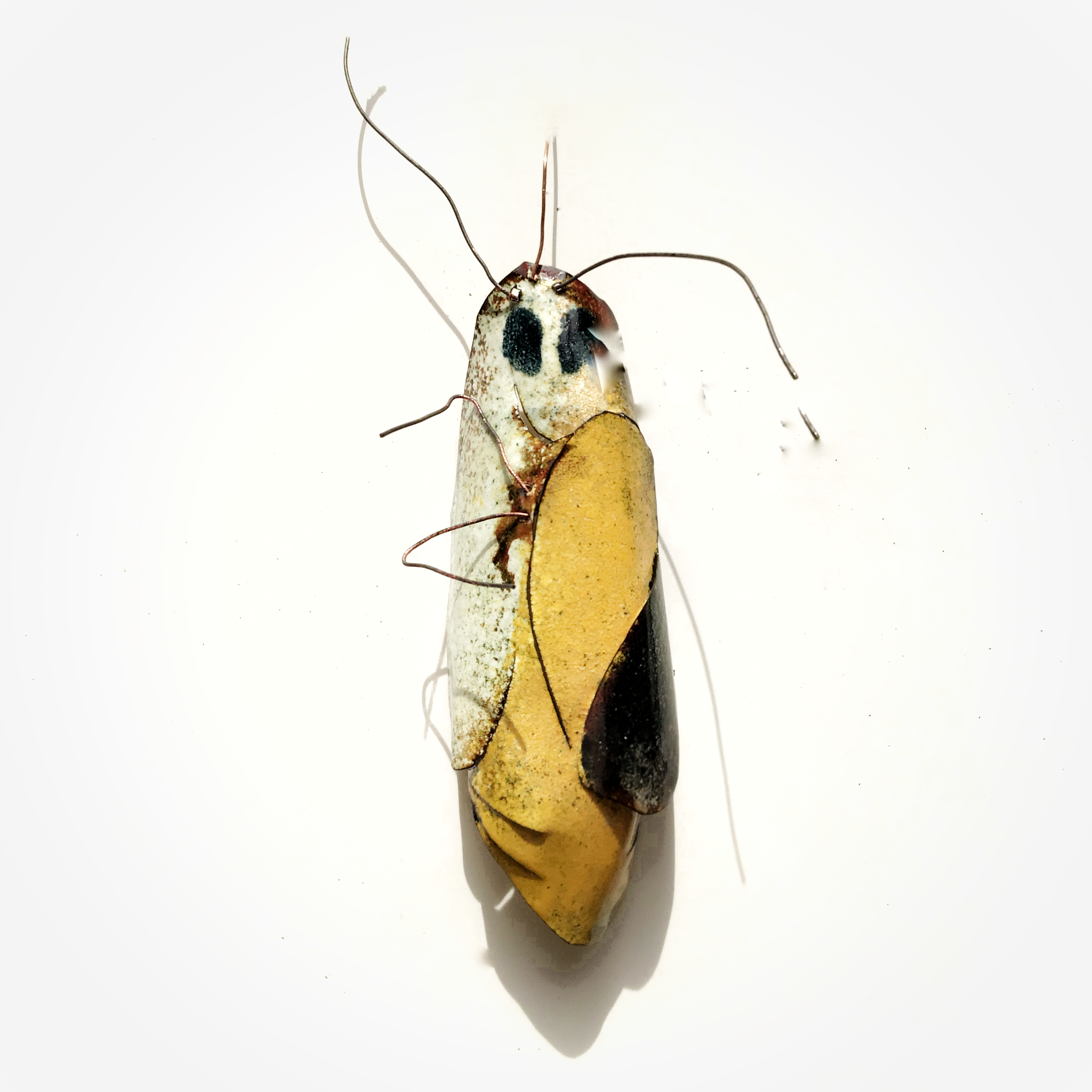
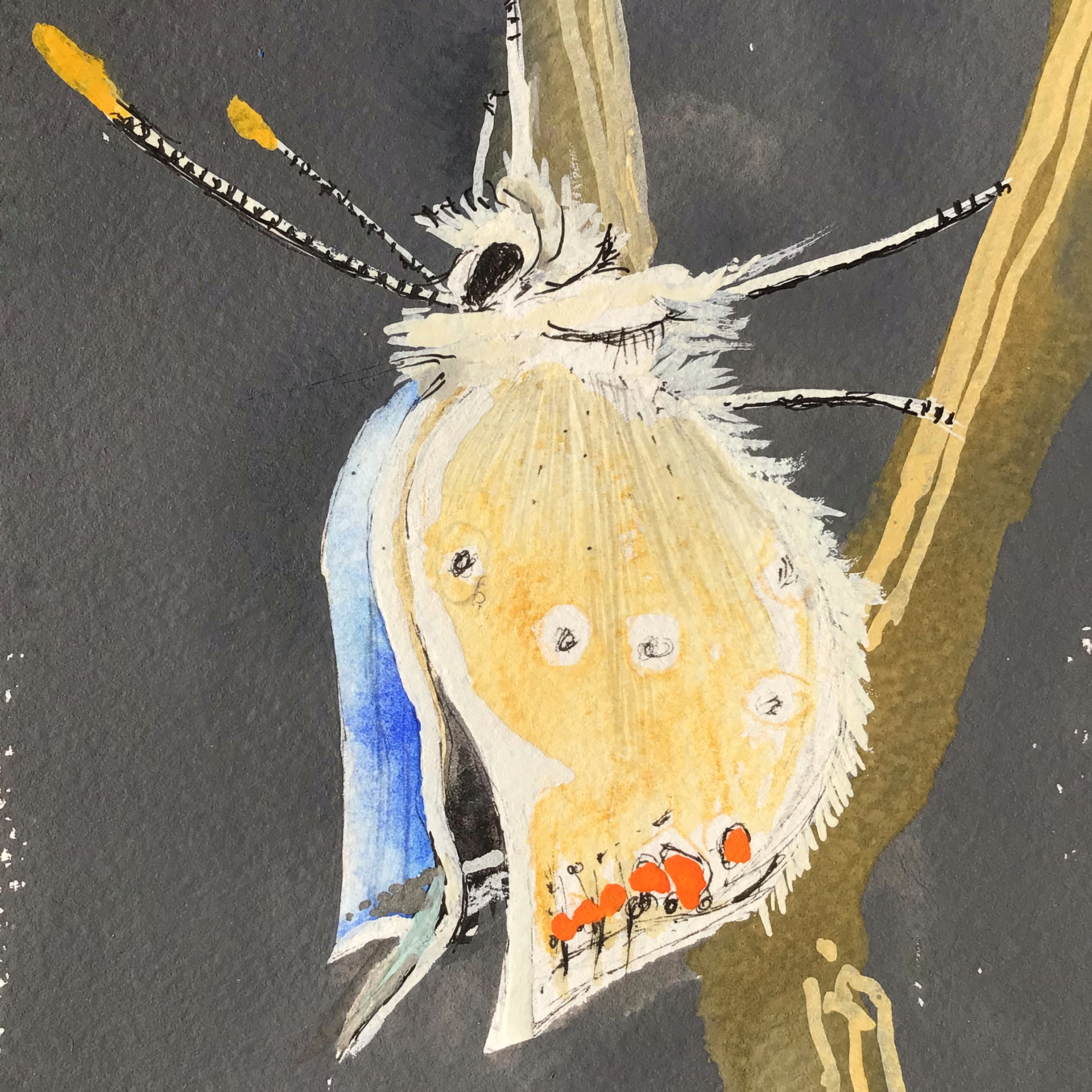
Evangeline Long
I have worked with the enamel medium since the seventies mostly on copper panels ranging in size from 15 cm square to 1 metre square and have sometimes formed copper sheet into sculpted forms before enamelling them , reflecting my early training as a sculptor.I have found themes in landscape and architecture and have particular interest in the way time and weather distress surfaces.
A year ago I was asked to illustrate three children’s’ books , two to be used in primary schools with therapy dogs on the theme of rescue racing greyhounds and one on the theme of the butterfly’s life cycle. After completing the latter it occurred to me that the illustrations would be ideal material for translating into enamelled works.
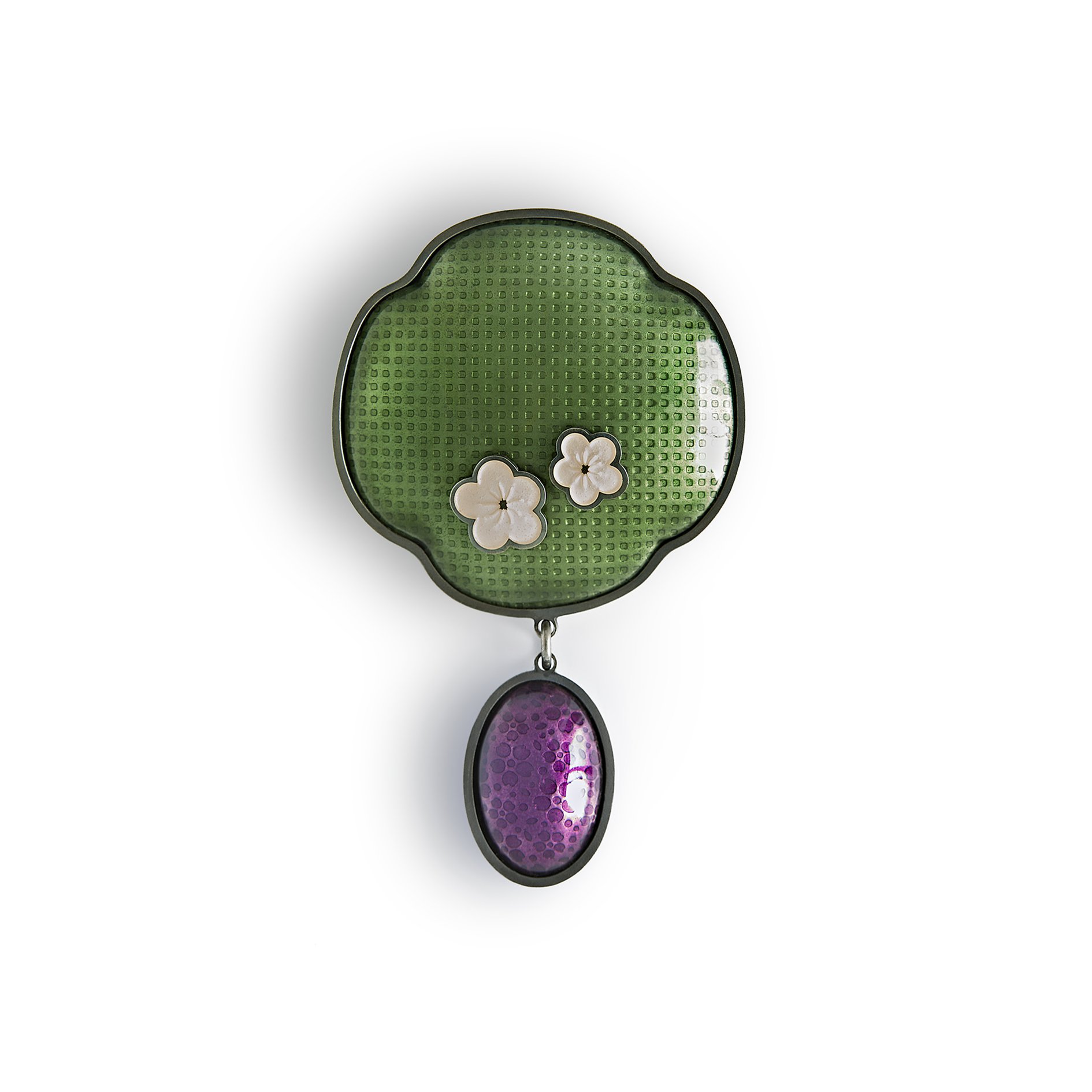
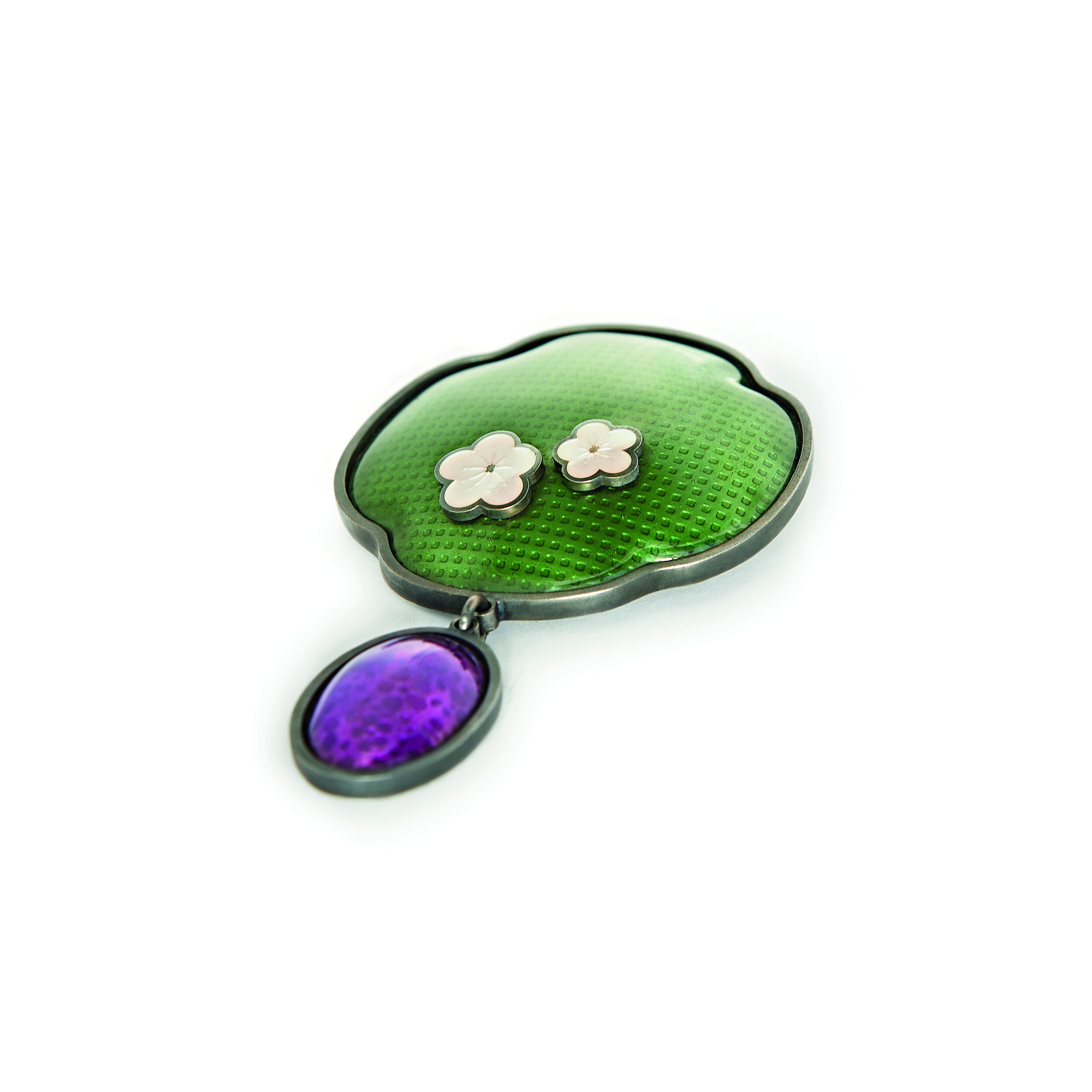
Jane Moore
Jane’s inspiration comes from the simple silhouettes of traditional Japanese aesthetics often embellished with tiny, floral motifs. Ideas begin as drawings in her sketch book, where they can evolve unconstrained by the limitations of the process. Only when she arrives at a pleasing image does she begin to consider whether it is technically possible. While enamelling and silversmithing are rooted in traditional techniques Jane also embraces more modern, industrial methods, such as photo etching, laser cutting, or the application of fine enamel transfers.
Over recent years my work has evolved considerably. The pandemic and lock down forced me into working in a way that required no out of workshop process. So I explored enamelling processes that I could do "in house". I am still very much inspired by Japanese aesthetics and have enjoyed this new challenge to explore new avenues and techniques.


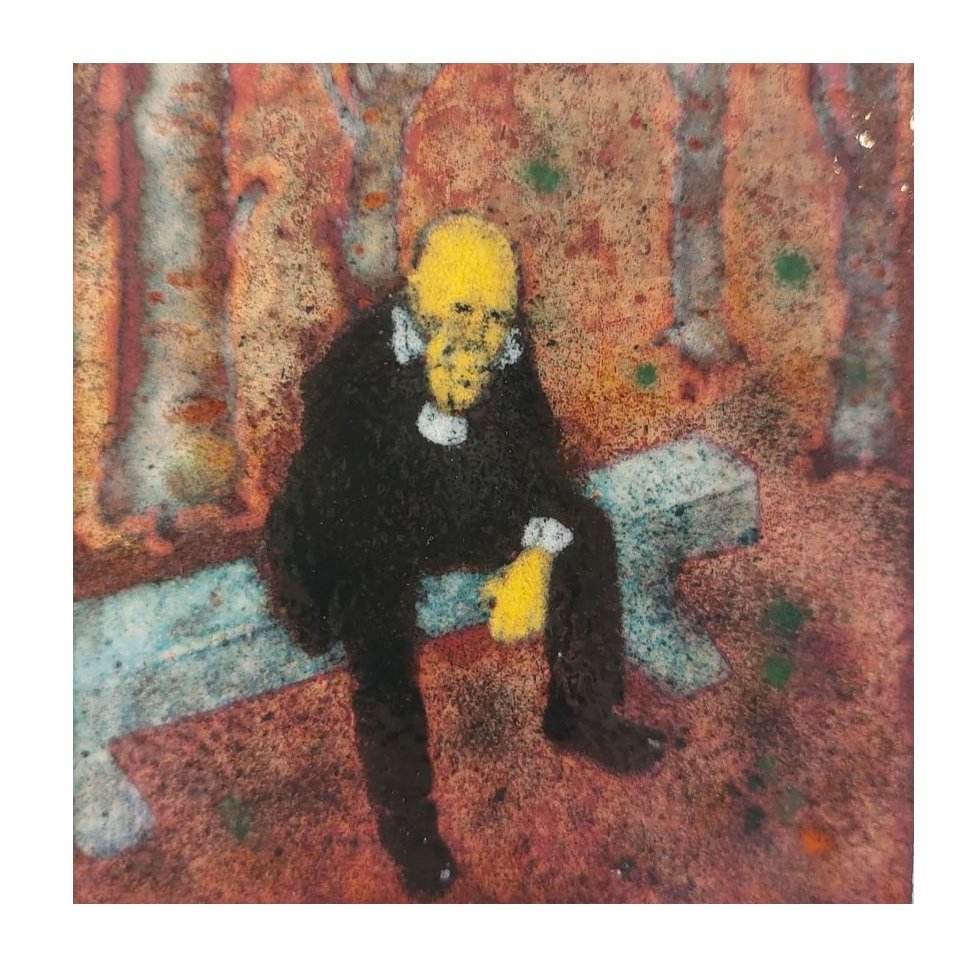
Jem O’Carroll
Enamel links ancient history and my childhood with the here and now. There is an agelessness to the colour and materials of copper and glass fused in the heated furnace of the kiln and time. My art represents a maturing emotional relationship with the subjects of my external and internal environments with which I'm continually encountering, in part, I am growing by rediscovering my child, learning by mistakes and play
Image one: ‘Lord Vicar Dashwood - Hyena Peacock and Priest’. Enamel on copper.
Image two: ‘Pandyan Vipera a Caleidoscopio’ - enamel on copper
Image three: ‘Darwin Contemplating’ - enamel on copper
Lord Vicar Dashwood was destined to take his seat in the House of Lords. He pursued his military career in India but preferred to paint, spending his frequent leave periods in Cornwall and Denmark. His achievements in military administration were suddenly curtailed, he resigned his commission. A change in career path followed his inclination in religion and interest in art and the natural sciences. On arrival in Nigeria in 1898, a few years before it was declared a British protectorate in 1901, he joined the SMA (Society of African missions or Societas Missionum ad Afros). The SMA was founded at Lyons, France in 1856 by Monsignor Melchoir de Marion Bresillac.
A significant achievement in his new career was the discovery of an extinct example of the Pandyan Vipera a Caleidoscopio hitherto having been declared extinct. He more famous protege Father Kevin Carroll, anthropologist, linguist, ornithologist and photographer, was a member of the Society of African Missions also discovered the nest of an extinct species of bird, the details of which have been lost in the fog of time.
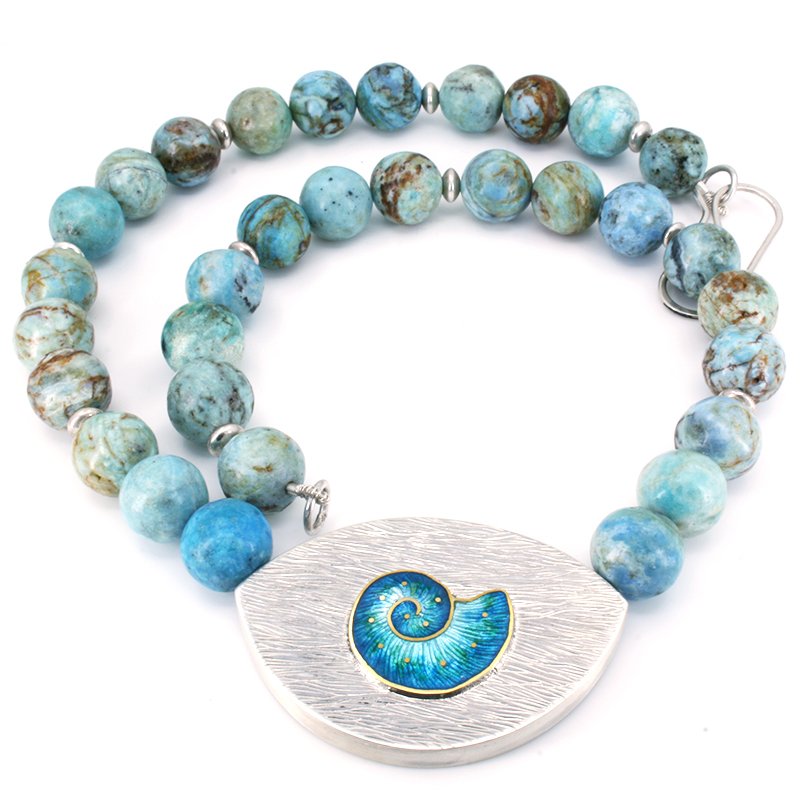
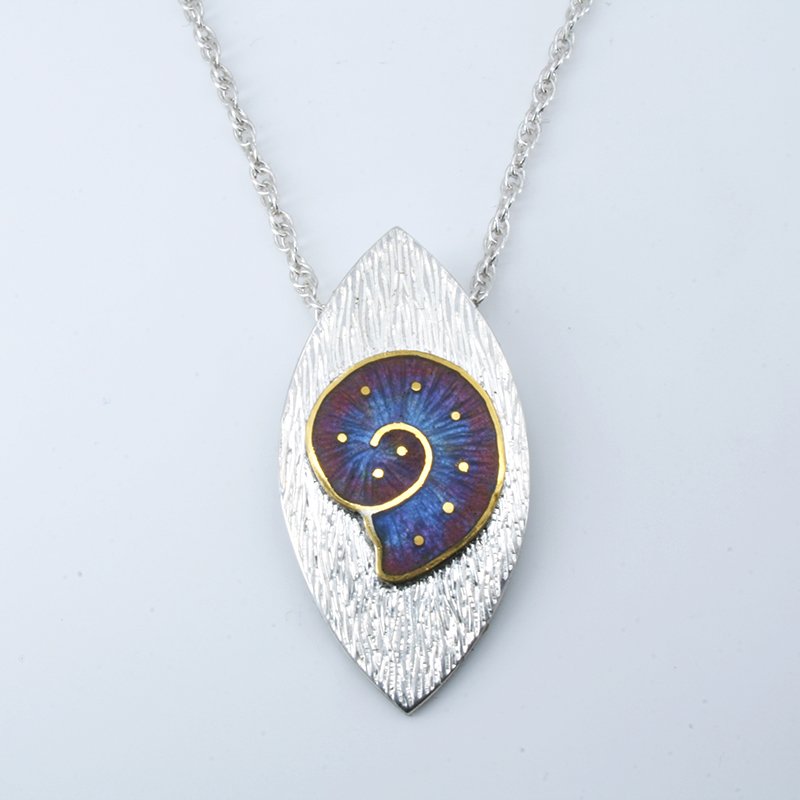
Linda Connelly
Linda is an Enamel Artist and Jeweller. She enjoys experimenting with a variety of techniques but in recent years has specialised in the traditional technique of cloisonne winning silver and bronze awards in the Goldsmiths' Craftsmanship & Design Awards 2020, 2021 and 2022. Linda's work is informed by memories, stories and dreams. Inspiration comes from her travels in India, visits to Venice and childhood holidays on the Jurassic Coast in UK.
My work is inspired by Ammonites which were a marine species that evolved throughout the Mesozoic era between 252 and 66 million years ago. Evidence of their existence comes to us through Fossils and the evolution of Ammonites can be traced by their appearance in rocks of different ages. Ammonites are a theme I have been exploring through different techniques in enamel for many years. During that time work has evolved as I explore new ways of working. These pieces are cloisonné on silver using fine gold wire over engraved silver. The silver surrounds are engraved to echo patterns in the rocks that contain them.
Website / Instagram / Facebook
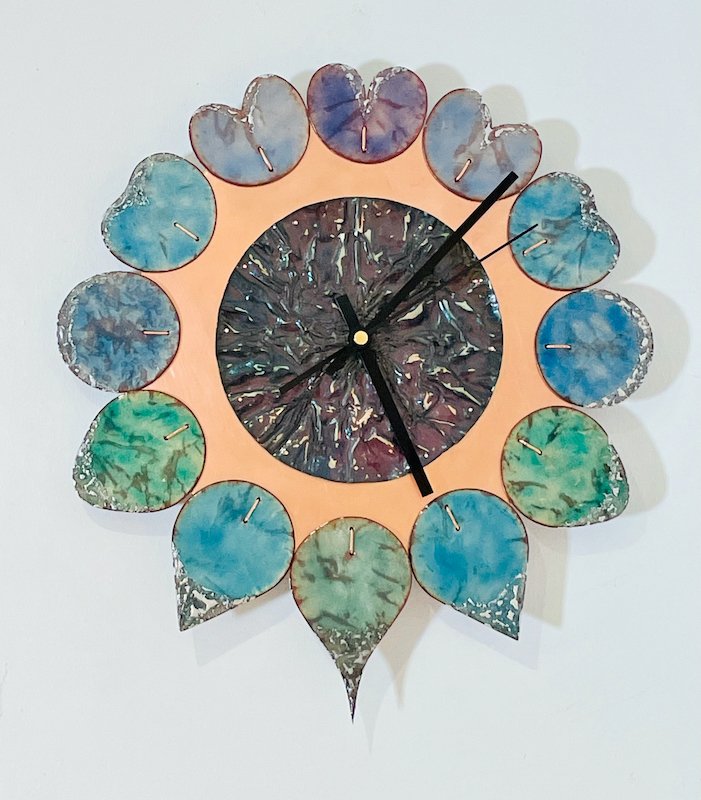
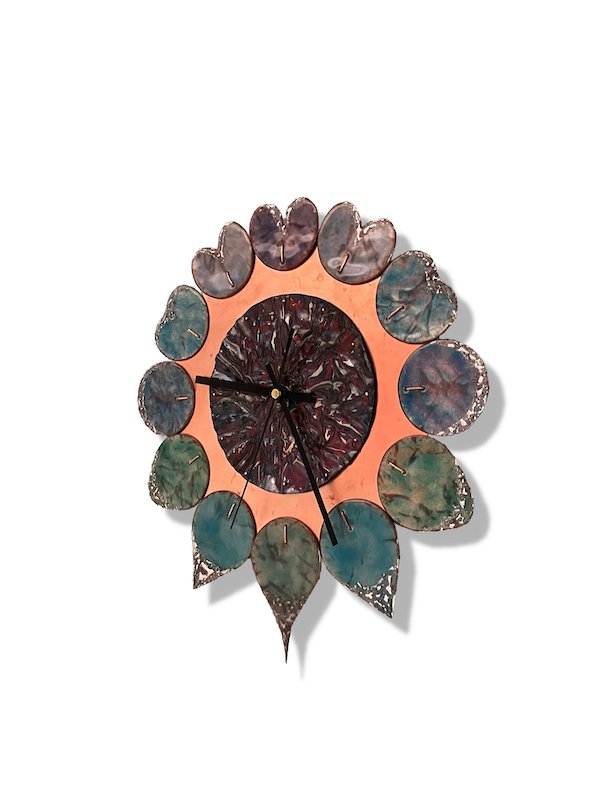

Navah Langmeyer
I create artwork with the colors, textures, and structures of enamels and cold connections, experimenting with techniques and methods in my minimal home studio. I’m inspired by my mathematical background, my love for water and plants, gazing out my windows, and wandering around my home town (wherever that may be). I regularly incorporate modularity and movement into pieces, and think of jewellery as sculpture for both body adornment and display, and a way to visually present my impressions and thoughts.
Evolution is change over time; what better way to represent the concept than with a clock which changes from hour to hour? This clock is based on my doctoral thesis, "The Quasihyperbolic Metric, Growth, and John Domains", 1996, about how certain functions behave on shapes with cusps. It shows the progression of cusp distortion of a disk, and also represents the evolution of my art which, over time, has become bolder, larger, and more modular.
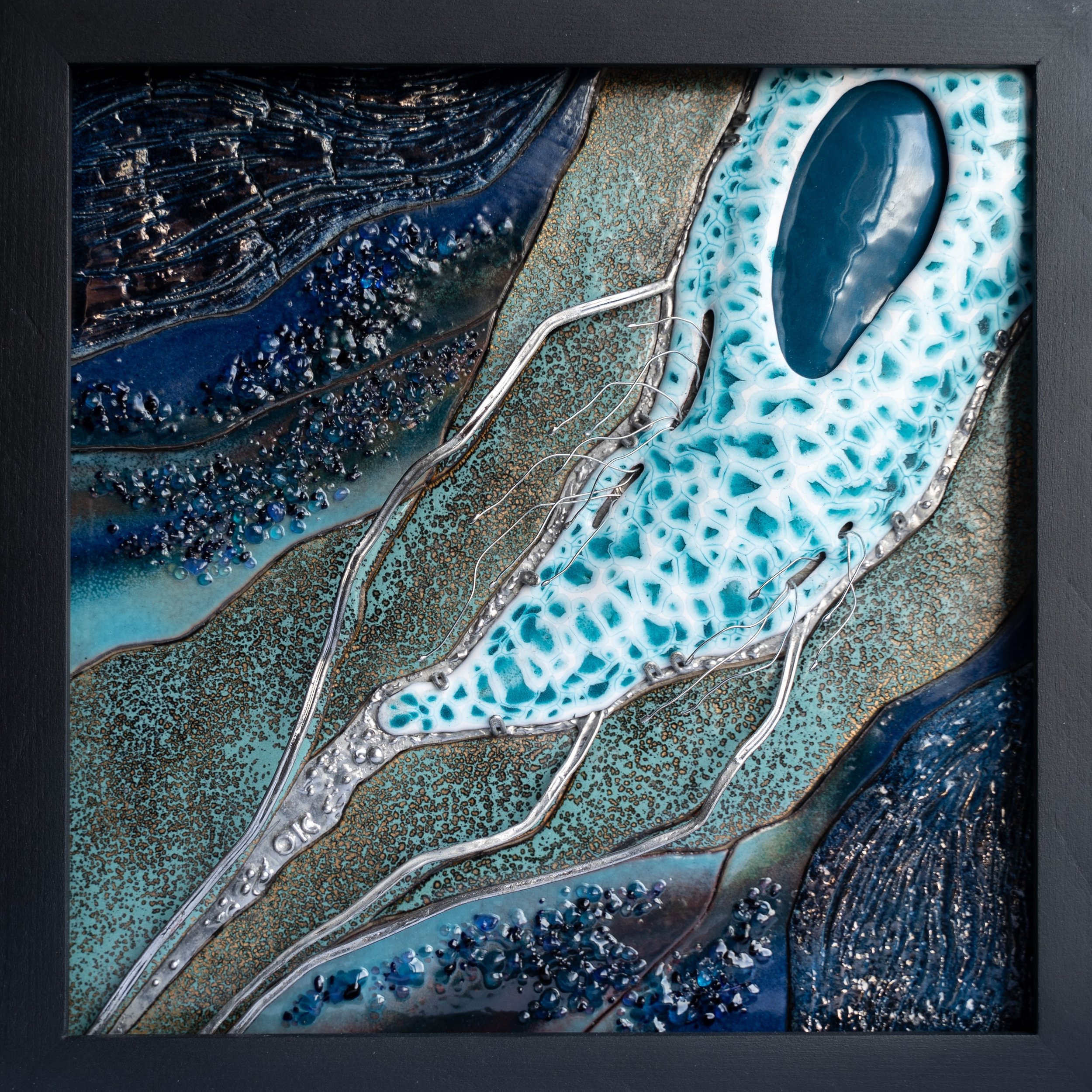
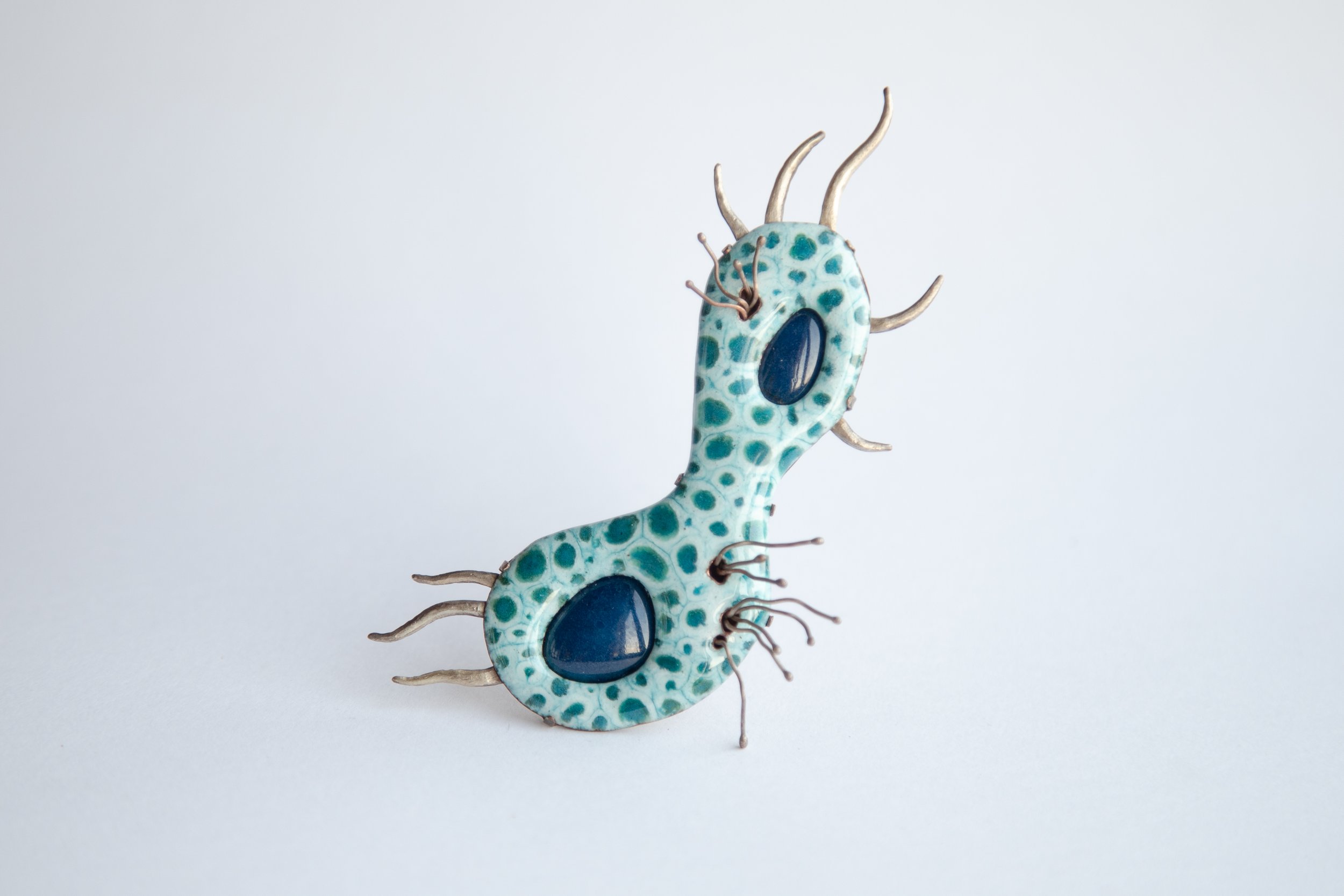
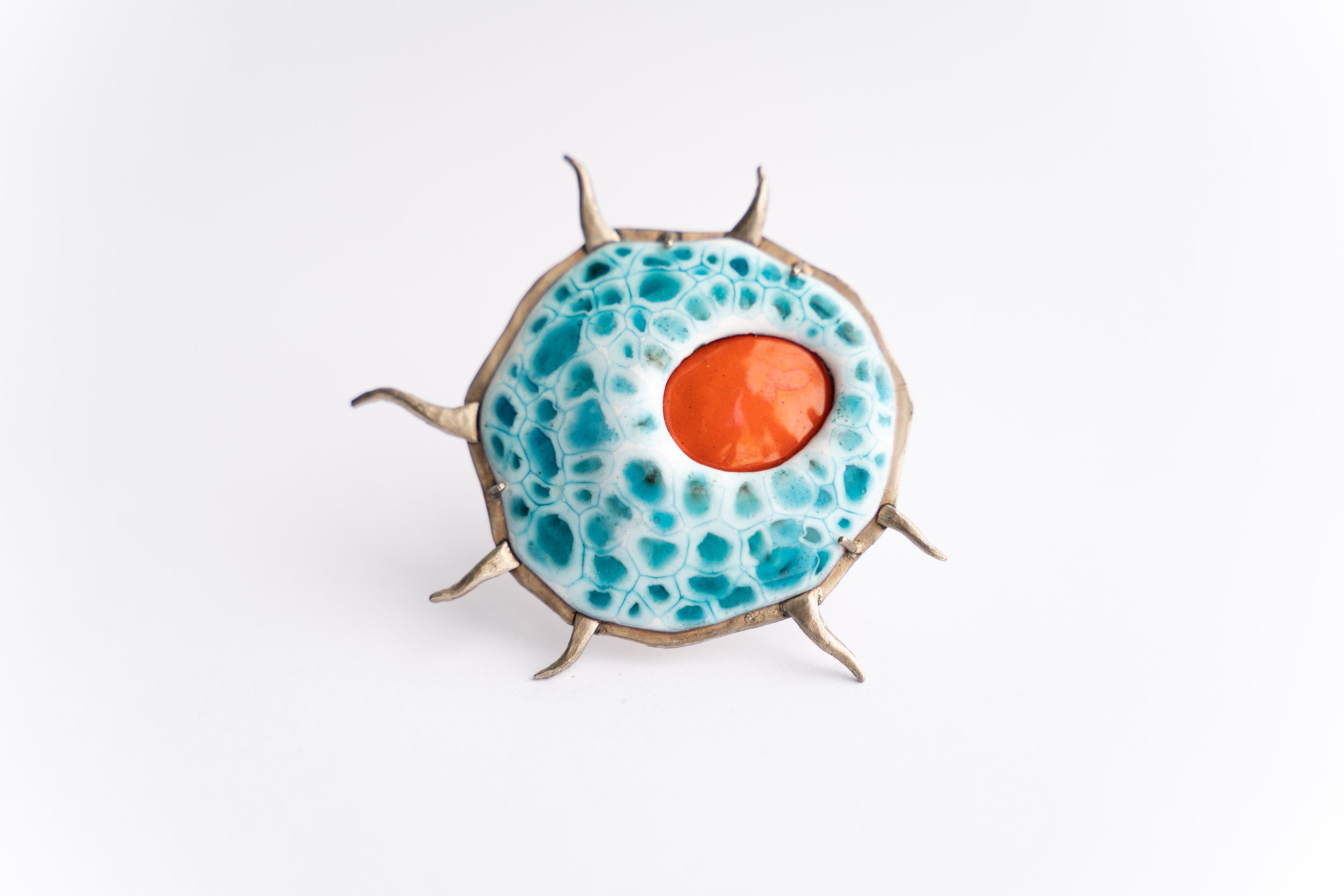
Olga Komisarova
I work with very traditional materials enamel and copper since 2017. But there is nothing more interesting than breaking all the traditional rules for using enamel. I was completely fascinated by contemporary techniques after the first two years of work with enamel. I really love textures and use hot enamel to create them. Sometimes in my work I use plastic, artificial hair, artificial fur. I like to combine seemingly incompatible materials.
The whole world is constantly in the process of change and evolution. But perhaps the most exciting evolution for the human mind is the evolution of life. It is still hard to believe that all living beings could come from microorganisms that continue to exist in invisible universes. What are they, other worlds? Those worlds without which we would not have survived, those worlds that can kill us. We never see them and forget they exist. How colorful and strange can this world be up close?

Sally Wright
I am a practicing enamellist and painter. I think each art form works to benefit the other. Themes of my work focus on nature and the world around me. I utilize a variety of techniques in enamelling, both traditional and experimental. I teach enamelling in New York City to students ranging in age from 18 to 94.
This piece is inspired by an old nearby farm, where I have spent time since childhood. I have been impressed not only with its regular natural cycles and seasonal changes, but also with the development
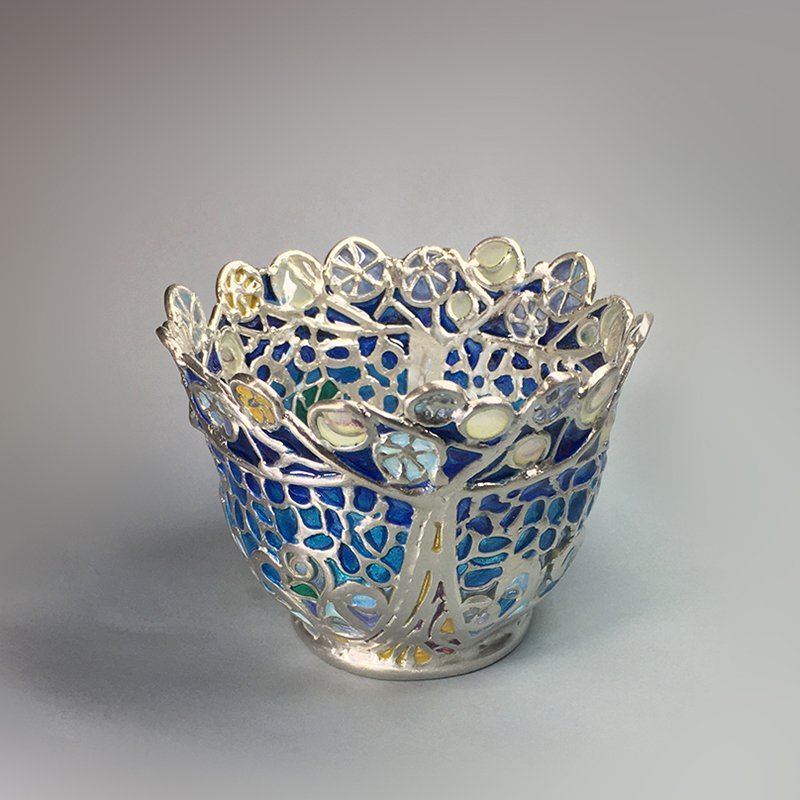
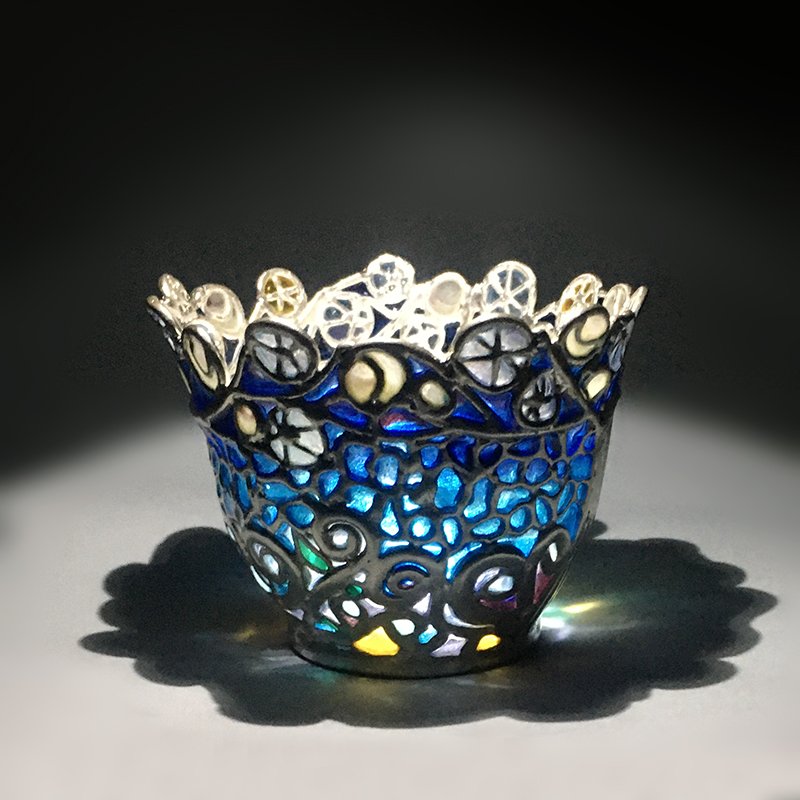
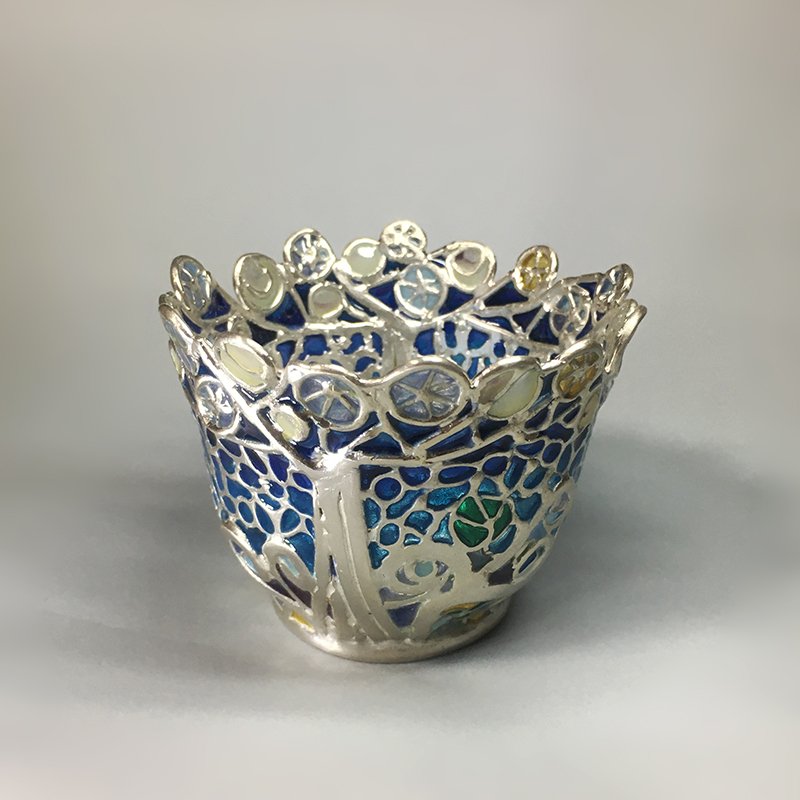
Yun Kyung Kim
I have been enamelling since 2012. I prefer to use Plique a jour, stained glass enamel techniques and mixed multi colours for my enamel work. I get many ideas from plants in nature and natural phenomenon such as light and darkness.
Since ancient times, all living things have changed and evolved for a better life. This work expresses the evolution of living things that transcend themselves and reach stars through evolution with the motif of the world tree. There are two world trees in the cup. It has tangled roots like vines, supporting stems, and massive branches with stars that open toward the sky. The bottom of the tree has a variety of colors as a symbol of life.

